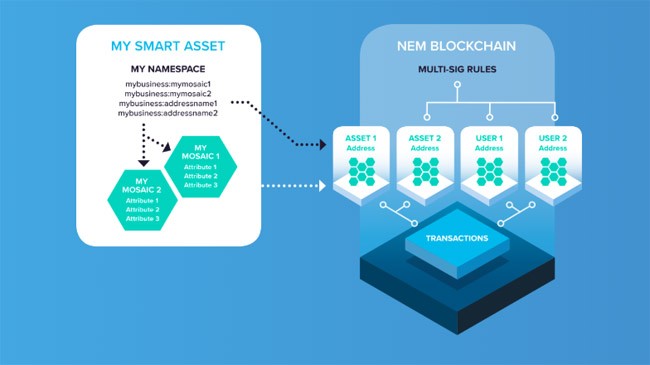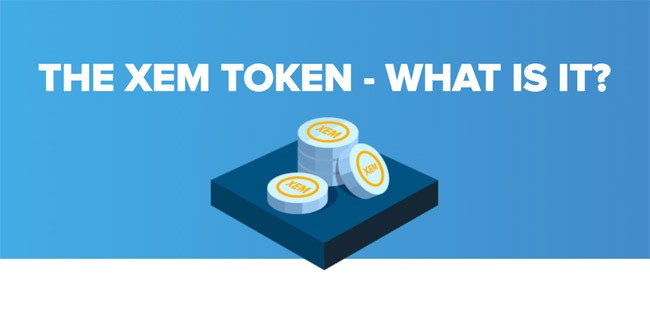There are now several thousand blockchain projects, which is amazing when you consider that the first, Bitcoin, began less than 10 years ago. Out of those thousands, several have risen to the top and NEM, which stands for New Economy Movement, is one of those top altcoins.
Not only that, but unlike so many other projects that were simply forked from another coin, or built as a token of an existing blockchain, NEM was created from the ground up. The developers intend for it to be an enterprise solution for the upcoming blockchain revolution.
The original idea for NEM first appeared on the BitcoinTalk forum in a post by the user UtopianFuture. NEM wasn’t planned to be built from the ground up at that time, but was put forward as a fork of the NXT blockchain. Ultimately the creators chose to go with their own original codebase, and as of June 25, 2014 an alpha version written in Java was released. It took another 9 months for a stable version of the blockchain to be released.
As of September 2018 the NEM code base is once again being rewritten, with the update planned for release before the end of the year. The new update is being written in C++ and will make NEM more scalable and faster. There are also plans to include two features never before included in a blockchain – Multi-Level Multisignature Accounts, and Aggregated Transactions.
NEM Review: The NEM Smart Asset System

One of the keys that makes NEM unique among blockchain projects is their Smart Asset System. This system was developed to be a customizable blockchain solution utilizing dozens of simple, yet powerful API calls. This will allow for a huge array of use-cases, and the decentralized nature of the network means that the global network of NEM nodes will act as the API Gateway for the platform.
This design has made NEM simple for developers to use, and they will be able to build powerful dApps without the need for specialized software. Instead, all the necessary functionalities will be provided by the NEM API Gateway.
This solution is elegant in as much as it will give the NEM platform the greatest degree of freedom and flexibility when it comes to system design and the types of apps that can be built. Besides just accessing the APIs directly, dApps can also access other servers in addition to making requests to the NEM API Gateway. In fact, it will be possible for developers to adapt servers to use NEM APIs in the background.
NEM Mosaics and Addresses
NEM addresses are the basic containers for holding assets and can be as simple as a wallet and as complex as a complete asset trading system. Addresses are also able to be both updated and changed, making them more flexible.
After defining “Addresses”, it’s possible for developers to then create “Mosaics”. A mosaic is an identical, transferable asset that represents the asset being held in the address. This flexible address/mosaic system gives NEM the ability to be useful in a countless number of use cases. But NEM use cases become really valuable once the APIs are added to the functionality of mosaics. This elegant design makes it possible for anyone to easily build any app they can think of and hook it into the NEM API Gateway.
If this sounds interesting you can learn more about NEM use cases here.
NEM Review: Proof-of-Importance Consensus Mechanism
The very first, and most widely used consensus mechanism was Proof-of-Work. It is used by Bitcoin and many other cryptocurrencies. Another consensus mechanism called Proof-of-Stake is also quite popular and used by many cryptocurrencies.
NEM uses neither of these.
Instead it has created its own unique algorithm called Proof-of-Importance which it uses to achieve consensus on the blockchain.
The Proof-of-Importance consensus mechanism gives users an incentive to participate in securing the network by assigning each node an importance score. This importance score is the determining factor for how often a node can “harvest” or collect XEM token rewards. Bad behavior lowers the importance score, so it allows for a decentralized network where all the participants exhibit good behavior.
In some ways the PoI system is similar to a PoS system, but in the case of PoI coins need time to become vested before they are counted towards a node’s importance score.
Coins always begin as unvested when they are first deposited in a wallet. Each day 10% of the coins in a wallet will vest, and to become eligible to have an importance score you need to have 10,000 vested coins in your wallet. As of September 13, 2018 this would cost just over $900. So, this part is similar to staking in a PoS system, but is just one part of NEM’s calculations.
The other part comes from the NEM network transaction graph. This is constantly monitored and analyzed and determines which nodes are providing the greatest contribution to the network. Because of this calculation the nodes that use the network the most are the ones that also rise to the top of importance scores. This incentivizes users to actively participate rather than just holding coins in a wallet.
The combination of the vesting score and the analysis of network transactions is used to create the importance score, and the nodes with the greatest importance score also have the greatest chance of harvesting XEM, although that is never a guarantee.
The PoI consensus mechanism has a benefit of not being resource intensive at all, so anyone can run a node on their computer. This helps increase decentralization and avoids the creation of mining farms and the use of powerful ASIC rigs.
It also avoids the type of situation where those with the most money can control the network by simply buying the most XEM coins. Because there is a time component, and a network usage component to the importance score smaller users are always able to increase their importance on the network and gain a foothold to make solid earnings.
NEM runs both network and mining nodes on the same software, which differs from the seperation used by Bitcoin and other Proof of Work blockchains. This combining of network and mining operations givs users an incentive for running a full node. This is important because the PoI consensus system needs as many nodes as possible. As more users join to reap the rewards of an increasingly profitable XEM coin, the network also becomes increasingly decentralized.
PoI so far seems to be a promising alternative to the more popular PoW and PoS systems, although it will be some time until NEM can prove that this is true.
NEM Review: Other NEM Features
NEM has additional uniques features. One is that it uses a custom algorithm known as Eigentrust++. This unique algorithm serves as a reputation system for the nodes in the NEM network. It llows each node to track the data received from every other node (blocks, transactions, etc) and creates independent verifications for all the data being transmitted.
As long as the information being transmitte dis valid, the node sending the information gets a boost to its reputation. These reputations are constantly being passed around the network, and updated by each participating node. This is an excellent means for removing bad actors and malicious nodes, as well as load balancing the entire network to keep it running efficiently.
Additional NEM Features:
- Spam filters built into the network to prevent spam from clogging up the network.
- A built in time synchronization system that allows the network to maintain accurate timestamps without the need to check outside servers for time.
- Messages on NEM can be encrypted on the blockchain, avoiding the need to hack transaction fields.
- Multi-party control over assets and containers is provided by the implementation of multisignature addresses.
Public vs. Private Blockchain
NEM makes it possible for anyone to create new apps on its blockchain using its APIs. In the event that an application or organization requires more privacy than is provided on a public blockchain a private in-house implementation of NEM can be used. This internal network and blockchain can be run on internal servers and the nodes can be predefined by the user or organization. And because the setup is an internal solution, some of the safety features that provide security from bad actors can be deactivated, improving network performance and speed dramatically.
Such a private closed blockchain has a multitude of uses. Logistics, loyalty programs, medical records and many other industries could benefit from such a solution. And businesses would be able to see unprecedented levels of speed and security without ever needing to expose their data to a public facing network. It’s a solution that will work for any company looking to leverage blockcahin technology without the overhead of a public blockchain.
Buying XEM

Buying XEM isn’t difficult as it’s being traded at several of the largest exchanges, such as Binance and Bittrex. You will need either BTC or ETH to make your purchase however, as XEM is not offered in exchange for fiat currencies, with the exception of Japanese exchanges that sell XEM in Japanese Yen. You can also purchase XEM at Poloniex, Huobi, HitBTC and Upbit as well as many smaller exchanges.
Coincheck XEM Hack
There has been some hesitance in buying and holding XEM from investors due to the hack of Coincheck that occcurred in January 2018. That hack resulted in the loss of roughly 523 million XEM, worth $530 million at the time of the hack. It was certainly an unfortunate occurrence, but there was no reflection on the security of the NEM platform. Coincheck had full responsibility for the hack, due to holding coins in a hot wallet, and making them vulnerable. Coincheck has promised they will reimburse all 260,000 individuals who were affected by the hack, and that reimbursement has been ongoing.
Storing XEM
To store NEM you’ll need to download the proprietary NEM Nano Wallet. The wallet has versions for Windows, OSX and Linux and gives users the full functionality without the need to run a full node. There’s also a mobile version of the wallet available for Android and iOS devices.
Those who want to vest their XEM and harvest will need to run the full node client, which can be downloaded from the NEM website here.
NEM Review: Conclusion
The blockchain ecosystem is improved by the addition of NEM as it’s a unique and promising platform. Enterprise level solutions on the NEM blockchain will soon be a reality once the Catapult update is released. It’s almost certain that more developers will investigate the possibilities of NEM, seeing how easy they promise to make it to develop new solutions. Plus, the Proof of Importance consensus mechanism and flexibility of the blockchain are sure to be real draws for developers of both public and private blockchains.
While there’s no way to guarantee adoption of the NEM technology, it does seem as if the project is gaining momentum on its own, and will be able to stand the test of time. Prices for NEM tokens remain depressed as of September 2018, and if the project sounds interesting to you it could be a good time to begin or increase your stake.